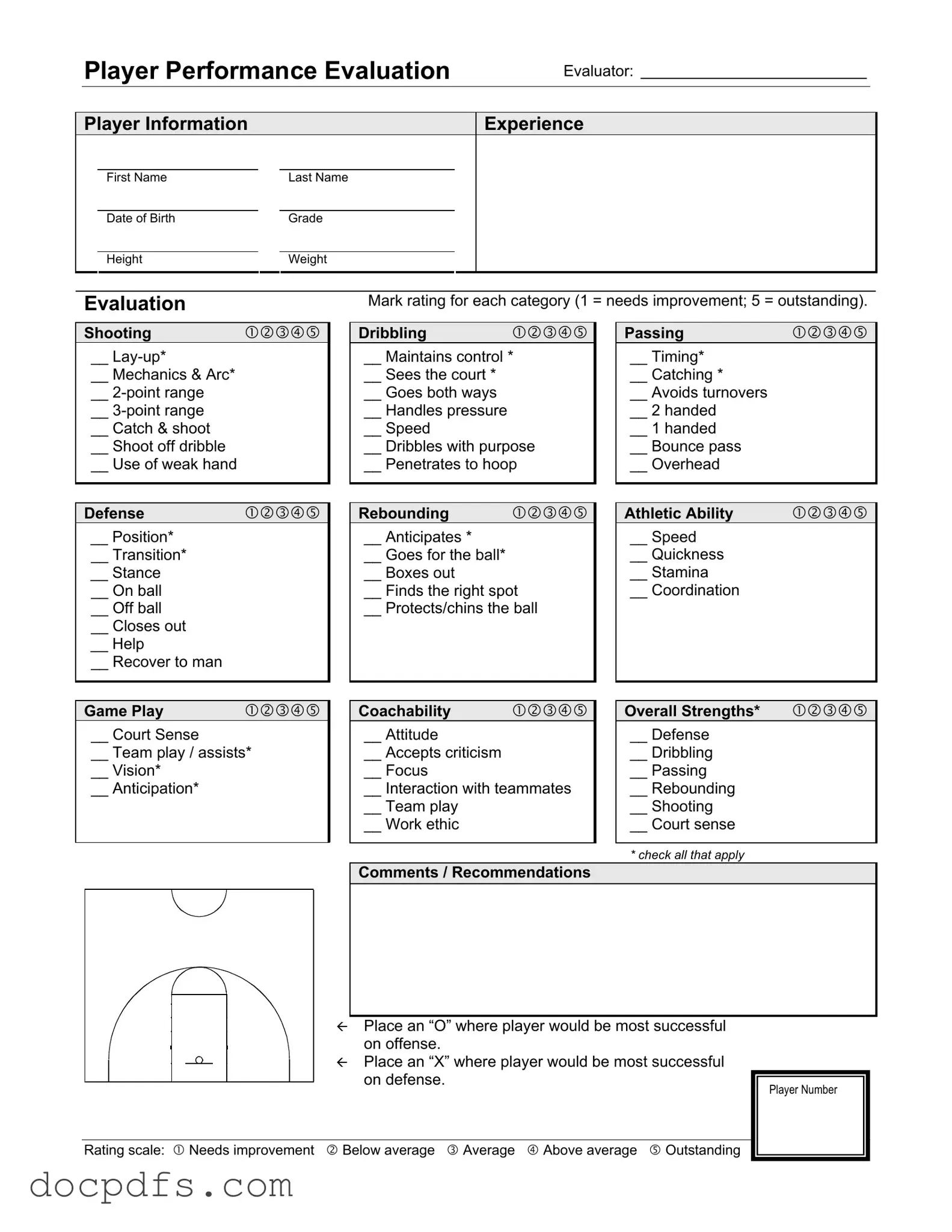The Basketball Evaluation form serves as a comprehensive tool to assess a player's skills and performance in various aspects of the game. Coaches and evaluators use this form to provide structured feedback on a player's abilities in shooting, defense, dribbling, passing, athletic ability, game play, and coachability. This evaluation helps in identifying strengths and areas for improvement, ultimately guiding players in their development.
How is the evaluation scored?
Each category within the evaluation is rated on a scale from 1 to 5, where:
-
1 = Needs Improvement
-
2 = Below Average
-
3 = Average
-
4 = Above Average
-
5 = Outstanding
Evaluators mark the player's performance in each category, allowing for a clear overview of their skills and competencies.
What categories are included in the evaluation?
The evaluation encompasses several key categories, including:
-
Shooting
-
Defense
-
Dribbling
-
Rebounding
-
Passing
-
Athletic Ability
-
Game Play
-
Coachability
Each category is further broken down into specific skills, providing a detailed assessment of the player's abilities.
Evaluators should consider the player's performance during games and practices. Observing how the player interacts with teammates, handles pressure, and executes skills under game conditions is crucial. Additionally, taking note of the player's attitude and willingness to learn can provide valuable insights into their coachability and overall potential.
Can the evaluation be used for multiple players?
Yes, the Basketball Evaluation form can be utilized for multiple players. Each player should have their own individual form to ensure that the evaluation reflects their specific skills and performance. This allows coaches to compare evaluations across the team and identify areas where group training may be beneficial.
The comments and recommendations section provides evaluators with an opportunity to offer personalized feedback. This can include insights on the player’s strengths, areas for improvement, and suggestions for training focus. Placing an “O” for offensive success and an “X” for defensive success helps clarify the player’s optimal positions on the court.
How can players use the feedback from the evaluation?
Players can utilize the feedback from the evaluation to create a targeted development plan. By understanding their strengths and weaknesses, they can focus their training efforts on specific skills that need improvement. Moreover, constructive criticism can motivate players to enhance their performance and work collaboratively with coaches to set achievable goals.
Is there a recommended frequency for conducting evaluations?
It is advisable to conduct evaluations at regular intervals throughout the season, such as at the beginning, mid-season, and end of the season. This frequency allows for tracking progress over time and adjusting training methods as necessary. Regular evaluations can also help maintain player motivation and engagement in their development journey.
